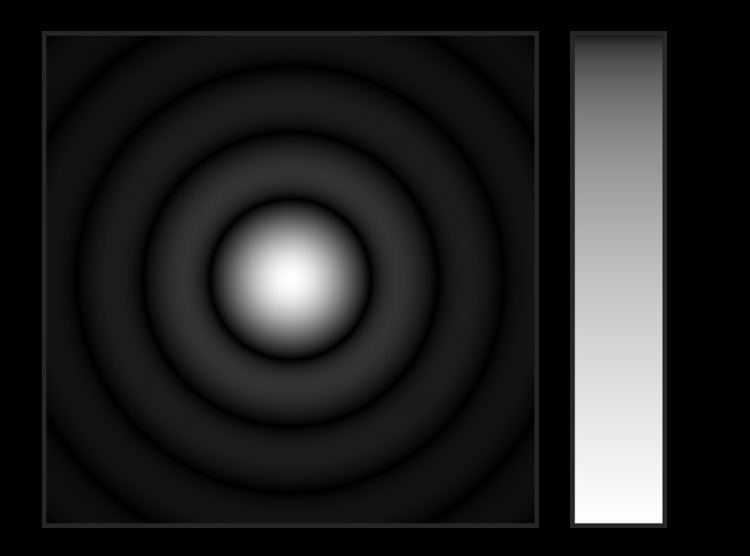 | ||
The Strehl ratio is a measure of the quality of optical image formation, originally proposed by Karl Strehl, after whom the term is named. Used variously in situations where optical resolution is compromised due to lens aberrations or due to imaging through the turbulent atmosphere, the Strehl ratio has a value between 0 and 1, with an unaberrated optical system attaining the value of unity.
Contents
Mathematical definition
The Strehl ratio
where i is the imaginary unit,
The Strehl ratio can be estimated using only the statistics of the phase deviation
where sigma (σ) is the root mean square deviation over the aperture of the wavefront phase:
The Airy disk
Due to diffraction, even a focusing system which is perfect according to geometrical optics will have a limited spatial resolution. In the usual case of a uniform circular aperture, the point spread function (PSF) which describes the image formed from an object with no spatial extent (a "point source"), is given by the Airy disk as illustrated here. For a circular aperture, the peak intensity found at the center of the Airy disk defines the point source image intensity required for a Strehl ratio of unity. An imperfect optical system using the same physical aperture will generally produce a broader PSF in which the peak intensity is reduced according to the factor given by the Strehl ratio. An optical system with only minor imperfections in this sense may be referred to as "diffraction limited" as its PSF closely resembles the Airy disk; a Strehl ratio of greater than .8 is frequently cited as a criterion for the use of that designation.
Note that for a given aperture the size of the Airy disk grows linearly with the wavelength
Usage
The ratio is commonly used to assess the quality of astronomical seeing in the presence of atmospheric turbulence and assess the performance of any adaptive optical correction system. It is also used for the selection of short exposure images in the lucky imaging method.
In industry, the Strehl ratio has become a popular way to summarize the performance of an optical design because it gives the performance of a real system, of finite cost and complexity, relative to a theoretically perfect system, which would be infinitely expensive and complex to build and would still have a finite point spread function. It provides a simple method to decide whether a system with a Strehl ratio of, for example, 0.95 is good enough, or whether twice as much should be spent to try to get a Strehl ratio of perhaps 0.97 or 0.98.
Limitations
Characterizing the form of the point-spread function by a single number, as the Strehl Ratio does, will be meaningful and sensible only if the point-spread function is little distorted from its ideal (aberration-free) form, which will be true for a well-corrected system that operates close to the diffraction limit. That includes most telescopes and microscopes, but excludes most photographic systems, for example. The Strehl ratio has been linked via the work of André Maréchal to an aberration tolerancing theory which is very useful to designers of well-corrected optical systems, allowing a meaningful link between the aberrations of geometrical optics and the diffraction theory of physical optics. A significant shortcoming of the Strehl ratio as a method of image assessment is that, although it is relatively easy to calculate for an optical design prescription on paper, it is normally difficult to measure for a real optical system, not least because the theoretical maximum peak intensity is not readily available.
